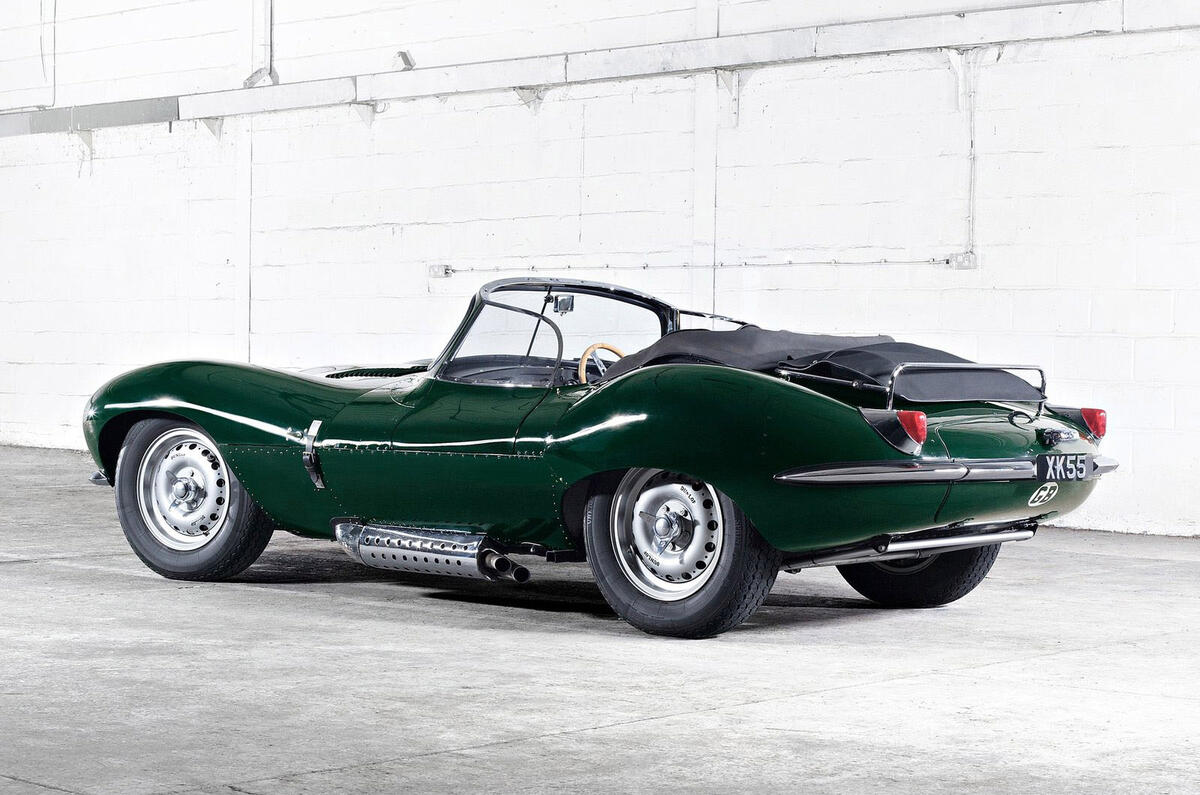I doubt there has been a worst kept secret in the industry of late than the fact that Jaguar is to recreate the nine XKSS chassis lost in the Browns Lane fire in 1957.
Read more: New Jaguar XKSS revealed in LA
Not that anyone at Jaguar blabbed about it, it’s just that after the successful sale of is new run of Lightweight E-Types, each coining Jaguar a seven-figure sum, the decision that the XKSS should be next must have been the easiest any senior executive would be likely to take in his or her career.
Interestingly, while these new XKSSs will represent a fine money-making opportunity for Jaguar, the originals only got built at all to help solve a very specific problem. By 1957 the Jaguar D-type was an old racing car, looking obsolescence in the face. Jaguar wasn’t even racing them or, indeed, anything else anymore.
And while the D-type would win a hat-trick at Le Mans between 1955-57, that is because the circuit played to its advantages, namely its reliability and aerodynamic efficiency. On slower circuits around the rest of the world, which placed more of a premium on handling and acceleration, it was far less successful. Indeed by 1957, Jaguar was sitting on a pile of 25 unsold D-type chassis wondering what to do with them. The XKSS was the answer.
Modified as little as humanly possible – a passenger door, windscreen, bumpers and the removal of the cockpit divider were the biggest differences – the XKSS was a road-going D-type in all but name, and right down to its tyre pressure. And it worked wonders: the Americans loved it and all bar two (one stayed at home, the other went to Hong Kong) crossed the pond before fire swept through the factory bringing a premature end to the XKSS story.
So it is great that the last cars are finally to be built. And, for the avoidance of doubt, they are not fakes, or replicas, they are genuine Jaguar XKSSs, factory-built by Jaguar. They’ve just taken a little bit of time to get around to making them.
Those who buy them will discover a car as good to drive as it is to look at. Whatever the limitations of a D-type on the track may be, on the road and XKSS provided performance no other road car of the era – not even the mighty Mercedes-Benz 300SL gullwing – could approach. Even today you’d need something properly quick to sort it out in a straight line – like a V8 Jaguar F-Type.






Join the debate
Add your comment
two of the worst cars
Miserable
Sorry to burst your bubble
Jaguar are a business so they obviously think the money generated by this is worth the risk to their heritage.
Where does it end?
"Continuation" models are not the same as originals, which is why a 'new' AC Cobra or GT40 is not the same as the real deal.
I've beaten this drum before, but this is going down a path that will tarnish rare classic cars. Ferrari could easily choose to finally get around to building the required homologation numbers of 250 GTOs and 512Ss that they never built at the time, and sell them for multi-millions each, but do we really want them to? McLaren planned to build 300 F1s back in the 1990s and stopped after about 80 because they simply couldn't sell them. Now that good ones are changing hands for over a million each, it must be tempting to knock out another dozen or more...
For every F40, F50 or Enzo that has been written off, should Ferrari build another one to replace it? Rolls-Royce could easily knock up some more Phantom IV continuation models for sh1ts and giggles – and millions of pounds – since the originals are now so sought-after.
JLR should leave the replicas to the independents, and get on with building some future heritage in the form of worthy new cars. An F-type GT3 would be a good start.